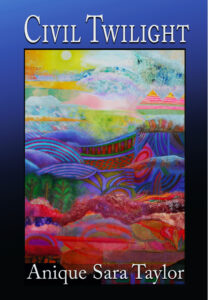Music
If I rest for a moment near The Equestrian
pausing for a liver sausage sandwich in the Mayflower Shoppe,
that angel seems to be leading the horse into Bergdorf’s
and I am naked as a table cloth, my nerves humming.
Close to the fear of war and the stars which have disappeared.
I have in my hands only 35c, it’s so meaningless to eat!
and gusts of water spray over the basins of leaves
like the hammers of a glass pianoforte. If I seem to you
to have lavender lips under the leaves of the world,
I must tighten my belt.
It’s like a locomotive on the march, the season
of distress and clarity
and my door is open to the evenings of midwinter’s
lightly falling snow over the newspapers.
Clasp me in your handkerchief like a tear, trumpet
of early afternoon! in the foggy autumn.
As they’re putting up the Christmas trees on Park Avenue
I shall see my daydreams walking by with dogs in blankets,
put to some use before all those coloured lights come on!
But no more fountains and no more rain,
and the stores stay open terribly late.






















 About the Author:
About the Author:







